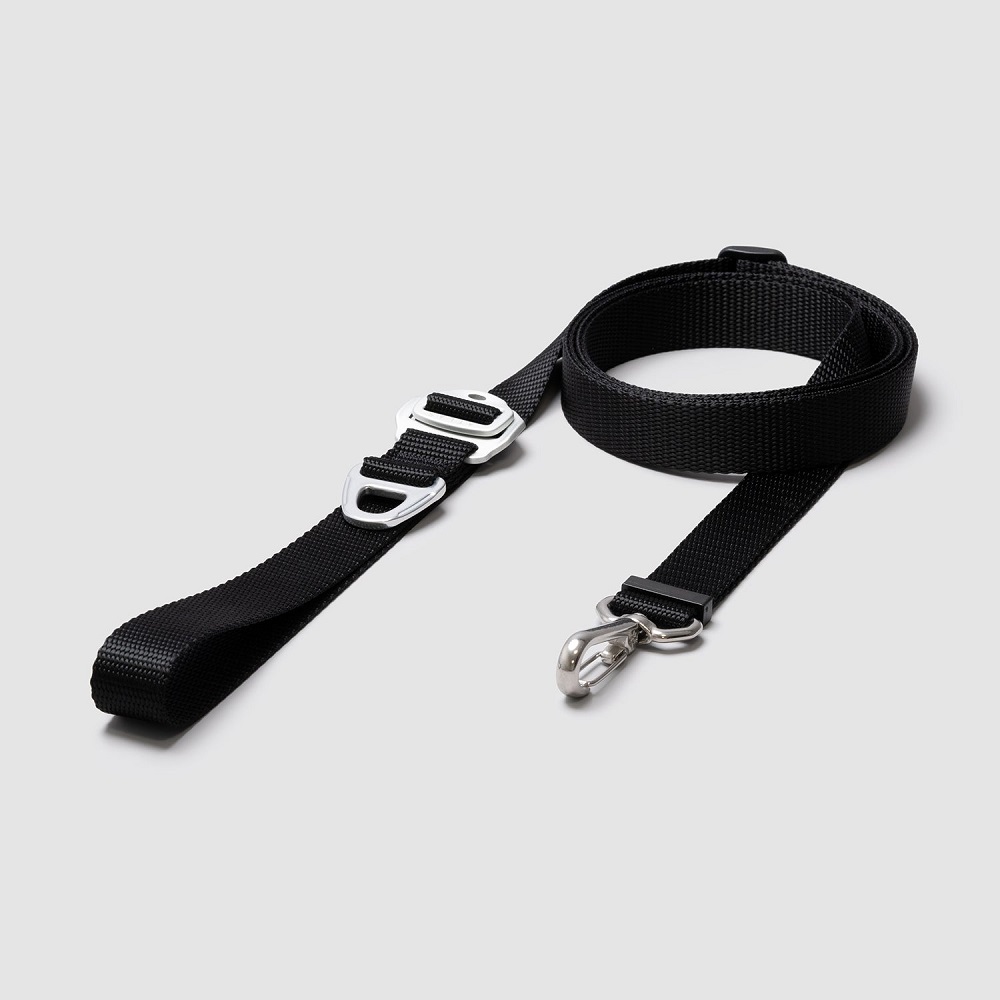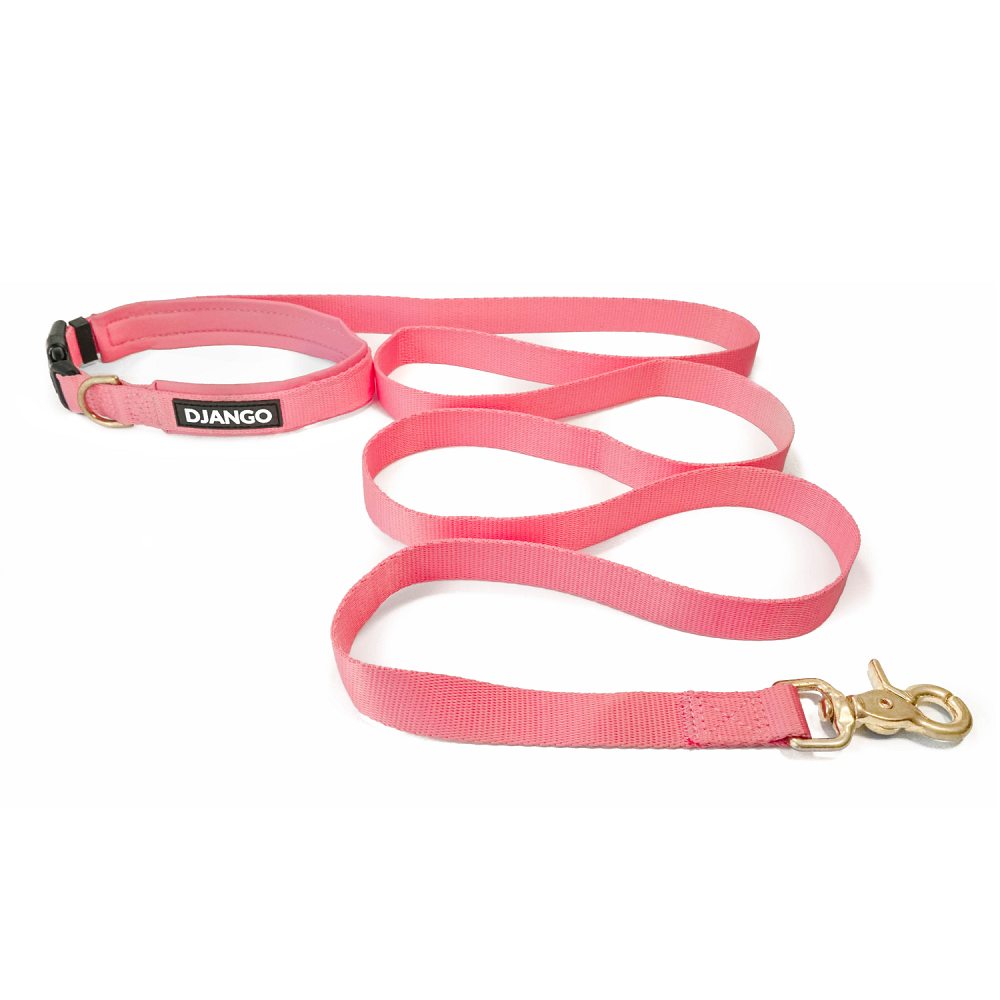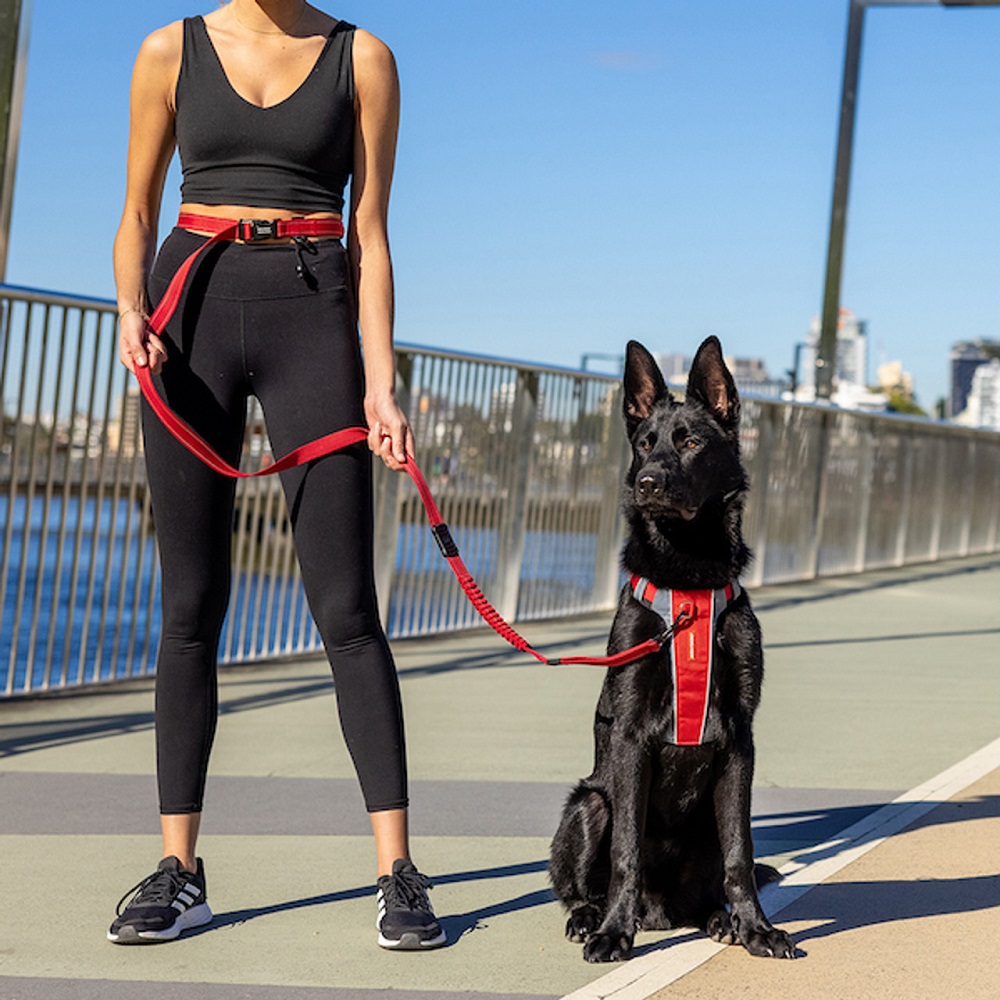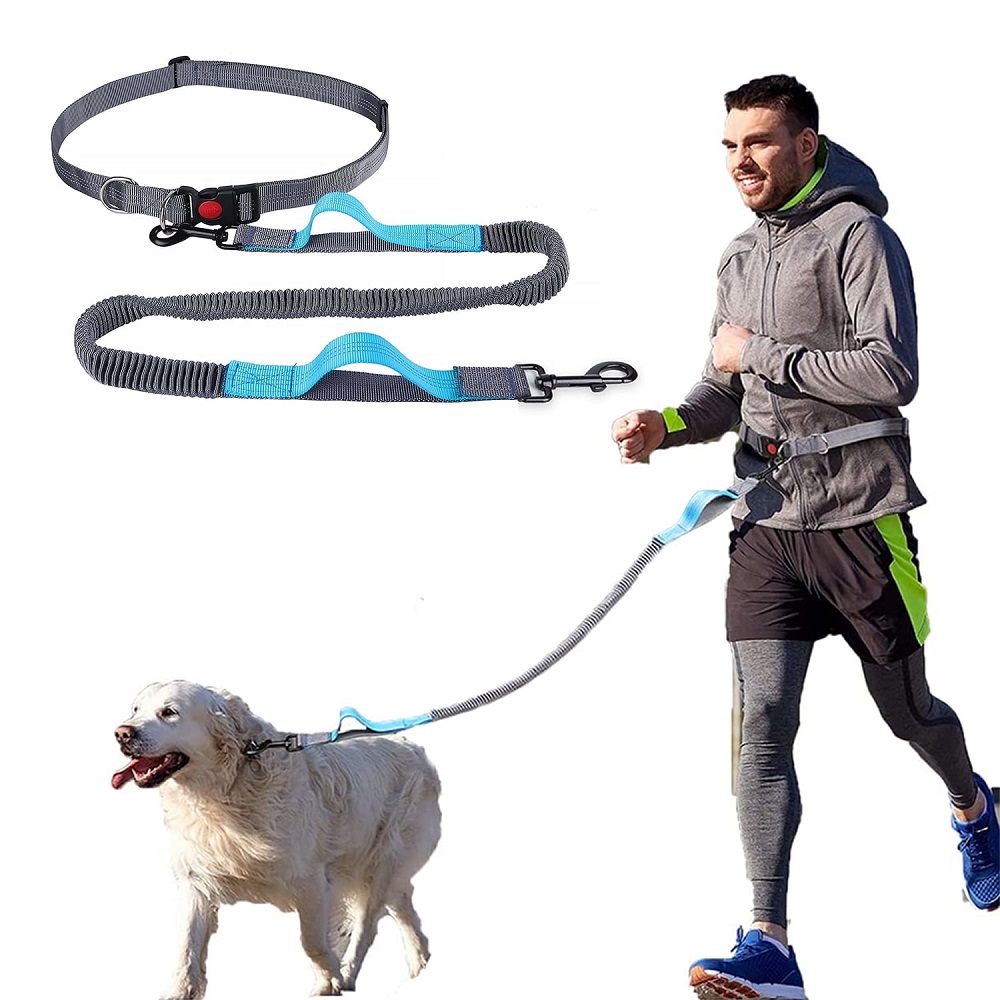As the number of dog owners continues to surge, the demand for more convenient and efficient ways to walk dogs is on the rise. Among the innovations designed for this purpose, hands-free dog leashes have emerged as a particularly popular solution. This article delves into the many advantages of hands-free dog leashes, their variations, and how they cater to the needs of active dog owners.
Understanding Hands-Free Dog Leashes
What Are Hands-Free Dog Leashes?
Hands-free dog leashes are designed to offer dog owners the convenience of walking their pets without using their hands. These leashes typically consist of a belt that attaches securely to the owner’s waist and a leash that connects to the dog’s harness or collar. The design allows for free movement of both the owner and the dog, making it an ideal choice for various activities, such as jogging, hiking, or even casual walks in the park.
The leash can often be adjusted for length and is constructed with durable materials to ensure safety and longevity. In many cases, hands-free leashes feature padded belts for additional comfort and can even include storage options for items like keys, poop bags, and treats. Some models are equipped with shock-absorbing bungee sections that help reduce the strain on the owner’s body during sudden pulls or jerks from excited dogs.

Why Choose a Hands-Free Dog Leash?
The choice of a hands-free leash is informed by a variety of benefits that enhance the dog-walking experience. One of the primary advantages is the ability to multitask. Whether catching up with a friend while walking the dog, jogging to stay in shape, or simply enjoying a stroll with your hands free, a hands-free leash allows pet owners to engage in other activities without compromising control over their pets.
Another significant advantage is the added comfort of a hands-free leash. By distributing the dog’s weight across the owner’s waist rather than being gripped in a hand, it reduces the strain that can result from constant pulling. This feature is particularly beneficial for individuals with physical limitations or anyone looking to prevent future injuries related to repetitive hand use. Ultimately, hands-free leashes integrate convenience, safety, and comfort, appealing to a wide range of dog owners.
The Benefits of Using Hands-Free Leashes
Enhanced Freedom of Movement
One of the most compelling reasons to opt for a hands-free dog leash is the enhanced freedom of movement it provides. Traditional leashes often restrict an owner’s ability to move naturally, forcing them to keep both hands on the leash at all times. However, with a hands-free model, owners can engage in physical activities like jogging, cycling, or even carrying a backpack without compromising the control of their dog.
This freedom can significantly improve the walking experience for both the owner and the dog. Dogs can enjoy a more extended range of movement, while owners can run, exercise, or help their children or others with errands simultaneously. The added convenience allows for spontaneous adventures without needing to return home to retrieve a leash. For active lifestyles, hands-free leashes serve to integrate dog-walking into everyday activities seamlessly.
Stress Reduction for Dogs
Many dogs experience anxiety and stress during walks, especially when they feel confined or restricted by a traditional leash. A hands-free leash allows for a more natural walking style, which can help alleviate some of that anxiety. Dogs can walk comfortably beside their owners, exploring their surroundings without constant pulling or pressure on their necks.
Moreover, hands-free leashes often come with features that allow for quick adjustments. Owners can easily change the length of the leash, giving dogs more freedom when the situation permits. This flexibility encourages dogs to explore new sights and sounds, which can alleviate boredom and lead to greater overall happiness. Consequently, the emotional well-being of dogs improves, leading to a more enjoyable experience for both the dog and owner.
Types of Hands-Free Leashes
Adjustable Leashes
One popular type of hands-free leash is the adjustable leash. This design allows users to modify the length of the leash based on the activity at hand. For example, when jogging, a shorter length may provide more control, while a longer length is better for leisurely walks. This versatility means that owners can easily adapt the leash to different environments, whether they are navigating crowded areas or enjoying open green spaces.
These adjustable leashes often have features such as quick-release clips, adding to their ease of use. Many come with added safety features, like reflective materials for low-light conditions, ensuring visibility during early morning or evening excursions. The adjustable design maximizes comfort for both owner and dog, allowing for a seamless integration into various routines.

Bungee Leashes
Another noteworthy type is the bungee leash. This design includes a stretchable section that absorbs shocks, providing additional comfort for both the dog and the owner. When a dog pulls or suddenly darts ahead, the bungee component helps to cushion the jolt, minimizing strain on the owner’s back and shoulders. This feature is particularly beneficial for strong, energetic dogs who are prone to sudden bursts of energy.
Bungee leashes can also help train dogs to walk more consistently beside their owners. By softening the impact of pulling, these leashes encourage dogs to adjust their pace without harsh corrections. This gentle approach to leash management fosters better communication between the dog and owner, promoting a more positive walking experience.
Features to Look for in a Hands-Free Leash
Comfort and Fit
When selecting a hands-free leash, comfort and fit should be top priorities. The belt should have adjustable sizing to accommodate different body types, providing a secure and snug fit around the waist while allowing for movement. Look for padded belts to enhance comfort during longer walks or runs, as this feature reduces chafing and soreness.
Additionally, it’s essential to ensure that the leash mechanism is easy to operate. Quick-release features should be straightforward, allowing the owner to detach the dog quickly in case of emergencies. A well-designed hands-free leash will also have adjustable clips to change the leash’s length, adding versatility for various types of outings.
Safety Features
Safety is another crucial aspect when choosing a hands-free dog leash. Look for leashes that come with reflective stitching or materials, which enhance visibility during low-light conditions. This feature is especially important for those who enjoy walking at dawn or dusk.
Additionally, consider a leash with a reliable locking mechanism. This helps to prevent accidental detachment during high-energy activities. Safety also includes ensuring that the leash is made from durable materials that can withstand wear and tear, particularly for strong or large dogs. Ultimately, a safe hands-free leash will give owners confidence, allowing them to focus on enjoying time with their pets rather than worrying about their safety.
Training with Hands-Free Leashes
Gradual Introduction
Introducing a dog to a hands-free leash requires patience and a gradual approach. Start by allowing the dog to become familiar with the equipment. Let them sniff and interact with the leash and belt before attaching anything. Use positive reinforcement techniques, such as treats and praise, to associate the leash with good experiences.
Once your dog seems comfortable, start with short, controlled walks, allowing your dog to explore while ensuring that they maintain a loose leash. Gradually increase the intensity and duration of the walks, and consider using commands to build a strong walking relationship. With time and patience, dogs can adapt to the new leash and enjoy their walks even more.
Incorporating Commands
Utilizing commands effectively is key when training with a hands-free leash. Approaching training with consistency helps reinforce good behaviors. Whether teaching commands like “heel” or “stop,” reinforce your dog’s learning through verbal praises or rewards.
A hands-free leash allows owners to still offer corrections while having their hands free—whether to hold treats or manage obstacles. Training sessions using treats can also be a way to positively reinforce desired behaviors. Be sure to mix commands with spontaneous rewards; this encourages dogs to stay engaged and responsive during walks. Ultimately, consistent practice will foster a deeper bond and understanding between the owner and dog.

The Best Activities for Hands-Free Leashes
Jogging and Running
For active dog owners, jogging and running with a hands-free leash is one of the best ways to bond with their pets while getting exercise. Hands-free leashes specifically cater to this activity, allowing owners to maintain a steady pace without the hassle of holding a leash with their hands. When selecting a leash for jogging, be sure to choose one that allows for enough flexibility and shock absorption.
To ensure a smooth experience, familiarize your dog with jogging at a comfortable pace. Start with a simple walk and gradually introduce jogging intervals. This practice should help both the owner and dog build stamina and confidence. As the dog becomes accustomed to jogging, consider exploring trails or parks to provide variety and stimulate their sense of adventure.
Hiking Adventures
Hiking is another popular activity where hands-free leashes shine. They enable owners to navigate various terrains while allowing their dogs to enjoy nature. With a stable belt that supports movement, owners can focus on the scenic beauty without constantly adjusting a traditional leash.
Safety is paramount when hiking. Always choose a hands-free leash equipped with a reliable leash length mechanism. This flexibility is particularly useful on steep trails or busy hiking paths. Remember to provide plenty of water and fun breaks to keep both the dog and the owner energetic and engaged throughout the adventure. Moreover, dogs can roam safely while still being under control, enhancing the overall hiking experience.
Conclusion: A Must-Have for Active Dog Owners
In conclusion, hands-free dog leashes have revolutionized the way active dog owners engage in outdoor activities with their pets. By offering unparalleled freedom of movement, minimizing stress for both dogs and owners, and being versatile enough to adapt to different situations, these leashes have emerged as essential tools for pet lovers.
The various types of hands-free leashes—adjustable, bungee, and more—cater to different needs, ensuring that there’s an option for everyone. The right combination of comfort, safety features, and ease of use will enhance the walking experience for all.
For those who enjoy jogging, hiking, or simply maintaining an active lifestyle, investing in a quality hands-free dog leash is a decision that brings long-term benefits. Not only does it foster deeper connections with pets, but it also allows all dog owners to enjoy their time outdoors, making every adventure enjoyable and memorable. As more individuals discover the advantages of this innovative design, the popularity of hands-free dog leashes will surely continue to grow.










